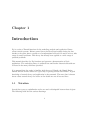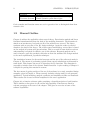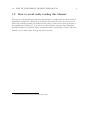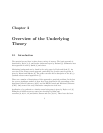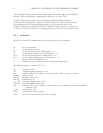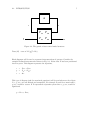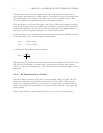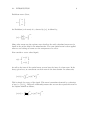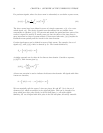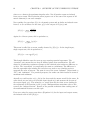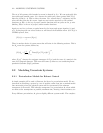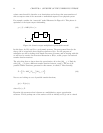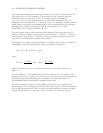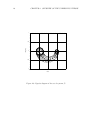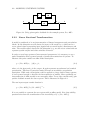
10 CHAPTER 2. OVERVIEW OF THE UNDERLYING THEORY
For persistent signals, where the above norm is unbounded, we can define a power norm,
x
i
(t) =
lim
T→∞
1
2T
T
−T
|x
i
(t)|
2
dt
1/2
. (2.1)
The above norms have been defined in terms of a single component, x
i
(t), of a vector
valued signal, x(t). The choice of spatial norm determines how we combine these
components to calculate x(t). We can mix and match the spatial and time parts of the
norm of a signal. In practice it usually turns out that the choice of the time norm is
more important in terms of system analysis. Unless stated otherwise, x(t) implies the
Euclidean norm spatially and the 2-norm in the time direction.
Certain signal spaces can be defined in terms of their norms. For example, the set of
signals x(t), with x(t)
2
finite is denoted by L
2
. The formal definition is,
L
2
=
x(t)
x(t) < ∞
.
A similar approach can be taken in the discrete-time domain. Consider a sequence,
{x(k)}
∞
k=0
, with 2-norm given by,
x(k)
2
=
∞
k=0
|x(k)|
2
1/2
.
A lower case notation is used to indicate the discrete-time domain. All signals with finite
2-norm are therefore,
l
2
=
x(k),k=0,...,∞
x(k)
2
<∞
.
We can essentially split the space L
2
into two pieces, H
2
and H
⊥
2
. H
2
is the set of
elements of L
2
which are analytic in the right-half plane. This can be thought of as
those which have their poles strictly in the left half plane; i.e. all stable signals.
Similarly, H
⊥
2
are all signal with their poles in the left half plane; all strictly unstable



